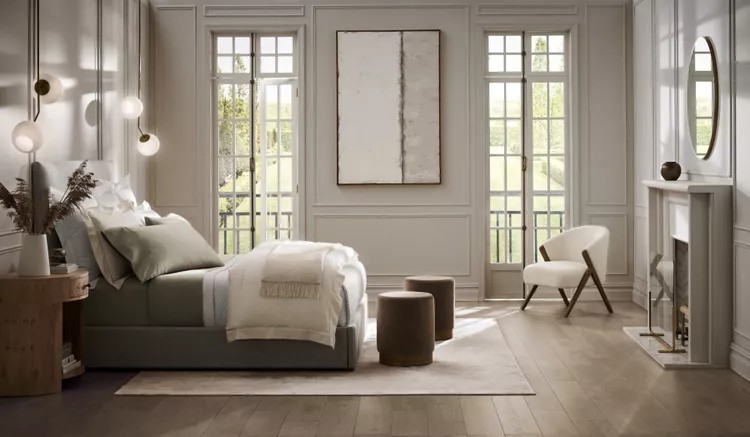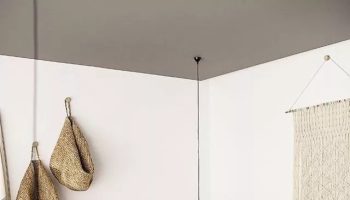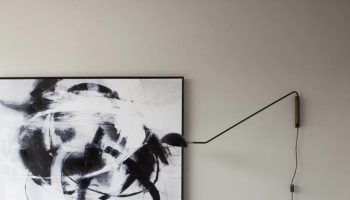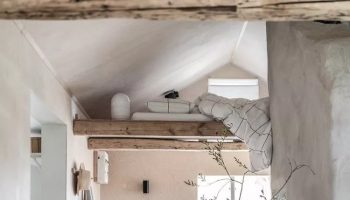Bedding is important. After all, you spend about a third your life in bed. The quality of the bedding you choose can affect your sleep and even the look of your bedroom.
You must have a few essential ingredients if you consider bedding to be a recipe.
You should add the following items to your list: sheets and pillowcases. Also, you will need a comforter or duvet. Yes, they are different, but serve the same purpose. You can choose different fabrics and weights depending on the season, your sleeping habits and how you like to sleep.
The ultimate bedding guide will help you create the perfect haven for a relaxing evening.
01 of 07
What are Shams?

While it’s tempting to confuse the terms “shams”, “pillowcases”, and “covers for standard sleeping pillows”, they are not the same. Shams are decorative covers for pillows, while pillowcases cover your sleeping pillows.
Tannen says that shams are a great way to personalize the look of a bed. They come in a variety of styles from solids to patterns and textures. You can layer decorative pillows in front of or behind standard pillows to add dimension to your bed.
The pillowcases are where your head rests each night. It is therefore important to select a fabric which matches your sleeping preferences. Choose a velvety, flannel sheet for a comfortable night of sleep. It provides the right amount of warmth, without holding in body heat.
02 of 07
What is a Duvet?

That a duvet is a blanket-like, fluffy layer designed to maintain the most comfortable temperature for you. Duvets can be made from down feathers, or alternative fibers, for a lofty and cloud-like feeling. They are then enclosed in a baffled box shell. It is important to find this design feature because it prevents the filling from moving from one end to the other of the duvet, which keeps you warm from top to bottom.
That a duvet’s versatility is unmatched. You can mix and match patterns, colors and textures to create different looks for your bedroom each season by changing the duvet cover.
03 of 07
What is the difference between a duvet and comforter?

If you are confused about the terms, remember that a comforter is one piece of bedding with an outer decorative fabric. A duvet, on the other hand, consists of two parts, a cover and a insert.
Both top-of-bed choices are excellent and offer their own benefits. Comforters are beautiful and offer the same look as duvets, but they’re not as versatile. You can change the cover of a duvet to create a completely different look for your bed, but you’d need to purchase a new comforter.
Duvets are available in all-season weights, so they’re the best option if you need to sleep at a certain temperature. You can then switch from your lighter summer duvet to a heavier winter one.
04 of 07
What Are Sheets?

If you’re upgrading your bedding, start with fresh (soft, high-quality, temperature-regulating) sheets. That while sheets might seem to be the most basic part of your bedding, they are important. They can make the difference between a good night’s sleep and one in which you toss and turn.
Think of sheets like the foundation to a more luxurious and comfortable night’s rest. It is the only layer that you are guaranteed to sleep on every night.
It’s important to select a fabric of high quality for your bed sheets. But don’t be too obsessed with thread count. That thread count has been a myth for decades in the bedding industry. The thread count is simply a measurement of fabric density – the number vertical and horizontal filaments per square inch. The denser fabric is the higher the thread counts.
That denser sheets don’t feel any better for sleeping in. The thread quality is more important than the thread count when it comes to achieving soft, breathable sheets. That fabrics with high thread counts, but in a soft, buttery weave, are far superior. They feel heavier, scratchy and do not last as long.
05 of 07
What should you consider when shopping for bedding?

When shopping for bedding you don’t want get bogged down with the details.You’ll also want to look at the quality of the bedding, as well as your style and sleep preferences.
100 percent organic cotton is ethically produced and recommended for many reasons. It’s not only breathable, but also durable and heirloom quality. It’s also a good feeling to know that the people who worked behind the scenes to create your bedding received fair compensation. The production of organic cotton is also much more environmentally friendly than the conventional cotton.
That shopping online or in stores is better for the environment, workers and you.
06 of 07
How do you choose the best bedding fabric for you?

Everyone has different sleeping habits, so if you spend a little time thinking about what works for you, finding the perfect fabric will be easy, Percale sheets are best for hot sleepers, no matter the season or climate. Flannel is a good option for those who have trouble staying warm at night.
That most people are somewhere in between and prefer soft, lightweight sheets. Perfect all-season sheets paired with warm winter covers and a single duvet or blanket in summer create a dreamy scene for sweet dreams.
07 of 07
How do you choose the best pillow for you?

You should first consider the type of sleeper that you are before choosing a pillow. Back sleepers need a firmer cushion, while stomach-sleepers require a soft one. Sleep on your side or back? You will want something between. Tannen says that the idea is to align your neck with your spine at night. You’ll receive the support you require with a pillow designed specifically for your sleeping position.
Customizing your bed, choosing layers to match your sleeping preferences and a style that reflects you personally can make a huge difference in your zzzzs and how you feel every time you enter your bedroom. Make your bed feel cozy, cohesive and inviting.






